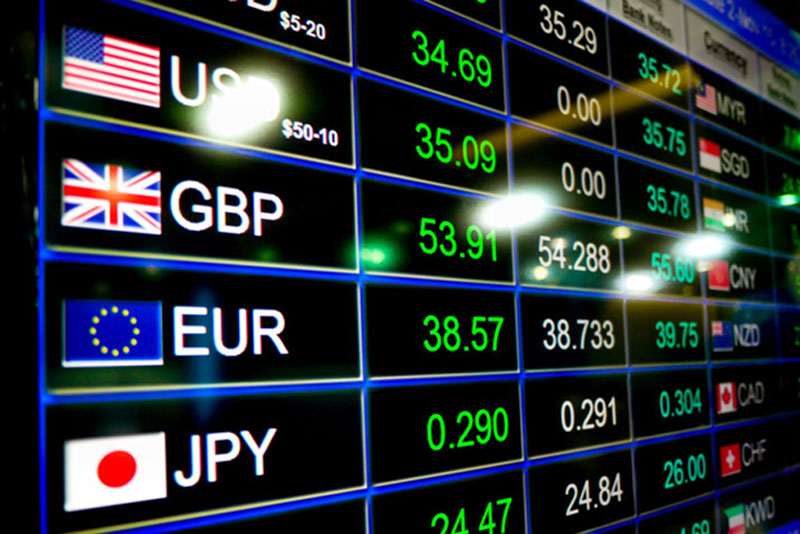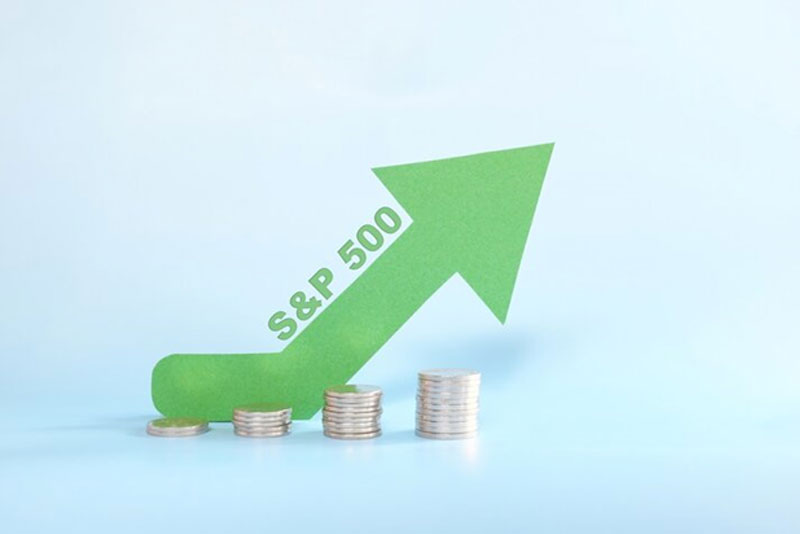Futures trading in micro foreign currencies is a dynamic and complex market that requires a deep understanding of global economics, currency movements, and risk management strategies. In this comprehensive guide, we’ll delve into the intricacies of trading micro foreign currency futures, including contract sizes, currencies traded, market influences, arbitrage opportunities, and hedging strategies.

Contract Sizes and Currencies Traded
Micro foreign currency futures are derivatives contracts that allow traders to speculate on the future value of a particular currency against another currency. These contracts are standardized and traded on futures exchanges such as the Chicago Mercantile Exchange (CME). The contract sizes for micro foreign currency futures are smaller compared to regular currency futures, making them more accessible to retail traders and investors.
The most commonly traded micro foreign currencies include:
- Euro (EUR/USD): The Euro is one of the world’s major currencies and is widely traded against the US Dollar. A micro Euro futures contract typically represents a smaller value compared to standard Euro futures contracts.
- US Dollar (USD): The US Dollar is the world’s primary reserve currency and is traded against various other currencies. Micro USD futures allow traders to speculate on the Dollar’s value relative to other currencies.
- Swiss Franc (CHF/USD): The Swiss Franc is known for its stability and is often used as a safe-haven currency. Micro Swiss Franc futures provide exposure to the CHF/USD exchange rate.
- Japanese Yen (JPY/USD): The Japanese Yen is another major currency, and micro Yen futures allow traders to take positions on the JPY/USD exchange rate.
- British Pound (GBP/USD): The British Pound, also known as Sterling, is traded against the US Dollar. Micro Pound futures enable traders to trade the GBP/USD pair in smaller contract sizes.
Other currencies such as the Australian Dollar (AUD), Canadian Dollar (CAD), and Mexican Peso (MXN) may also have micro futures contracts available for trading, depending on the exchange.
Market Influences on Micro Currencies
Market changes, including interest rate fluctuations, economic data releases, geopolitical events, and central bank policies, can significantly impact micro currencies traded in futures markets.
For instance, let’s consider the effect of an interest rate hike by the Federal Reserve (Fed) in the United States on the USD futures market. An increase in interest rates is often viewed as bullish for the USD, as it attracts foreign capital seeking higher yields. Traders anticipating such a move might take long positions in USD micro futures contracts, expecting the currency to strengthen.
Conversely, a cut in interest rates by the European Central Bank (ECB) could weaken the euro (EUR) against the USD. Traders who anticipate such a move might short EUR micro futures contracts to profit from the potential decline in the currency’s value.
Several factors can influence the value of micro foreign currencies and impact futures trading:
- Interest Rates: Central bank policies, including changes in interest rates, can significantly affect currency values. For example, if the US Federal Reserve raises interest rates, the US Dollar may strengthen against other currencies, leading to shifts in micro currency futures prices.
- Economic Data Releases: Key economic indicators such as GDP growth, employment figures, inflation rates, and trade balances can influence market sentiment and currency movements. Traders often react to these data releases by adjusting their positions in currency futures.
- Geopolitical Events: Political instability, trade tensions, and geopolitical conflicts can create uncertainty in the financial markets, leading to volatility in currency prices. Traders monitor geopolitical developments closely for potential trading opportunities or risks.
- Market Sentiment: Investor sentiment and risk appetite also play a crucial role in currency markets. Positive sentiment may lead to currency appreciation, while negative sentiment can cause currency depreciation.
Arbitrage Opportunities in Currency Futures
Arbitrage refers to the practice of simultaneously buying and selling assets in different markets to profit from price discrepancies. In currency futures trading, arbitrage opportunities can arise due to differences in exchange rates between futures contracts and the spot forex market.
For example, suppose the EUR/USD spot exchange rate is 1.2000, but the EUR/USD futures contract for the same expiration date is priced at 1.1950. This scenario presents an arbitrage opportunity for traders. They can buy euros in the spot market at 1.2000 and simultaneously sell EUR futures contracts at 1.1950, locking in a risk-free profit of 50 pips per contract (assuming no transaction costs or slippage).
Arbitrageurs play a crucial role in ensuring price efficiency and liquidity in futures markets by exploiting temporary mispricing.
In currency futures trading, arbitrage opportunities may arise due to:
- Price Discrepancies: Price disparities between the spot forex market and currency futures market can create arbitrage opportunities. Traders can buy or sell currency futures contracts to capitalize on these price differences until market equilibrium is restored.
- Cross-Currency Arbitrage: Traders can also engage in cross-currency arbitrage by simultaneously buying and selling related currency pairs to take advantage of mispricings in the futures market.
Hedging Strategies in Currency Futures
Hedging is a risk management technique used by businesses and investors to protect against adverse price movements. Currency futures offer an effective hedging tool for managing currency risk in international trade or investment portfolios.
For instance, consider a US-based company that exports goods to Europe and invoices its sales in euros. To hedge against the risk of a weakening euro, the company can enter into a long position in EUR micro futures contracts. If the euro depreciates against the USD, resulting in lower revenue in USD terms, the company’s futures position would gain value, offsetting the currency loss.
Similarly, investors with international portfolios can use currency futures to hedge against currency fluctuations that may impact the value of their holdings. By taking opposite positions in currency futures contracts corresponding to their foreign currency exposures, investors can mitigate the risk of currency depreciation.
Here are some hedging strategies using currency futures:
- Transaction Exposure Hedging: Businesses engaged in international trade can use currency futures to hedge against potential losses due to currency fluctuations. For example, a US importer expecting payment in Euros can use EUR/USD futures contracts to lock in a favorable exchange rate and mitigate currency risk.
- Portfolio Hedging: Investors with foreign investments can hedge their currency exposure using currency futures. By taking opposite positions in currency futures contracts, investors can offset losses in one currency with gains in another, reducing overall portfolio risk.
- Speculative Hedging: Traders and investors can also hedge speculative positions in the forex market using currency futures. If a trader holds a long position in the EUR/USD spot market, they can hedge against downside risk by taking a short position in micro Euro futures contracts.
E-Futures International: A Premier Platform for Micro Currency Futures Trading
E-Futures International, offered by E-Futures.com, is a leading platform for trading micro currency futures and other derivatives. Here are some reasons why it stands out as an excellent choice for traders:
- Advanced Trading Tools: E-Futures International provides a comprehensive suite of advanced trading tools, including real-time charts, technical analysis indicators, market depth, and customizable order types, empowering traders to make informed decisions.
- Low-Cost Access: The platform offers competitive commission rates and low margin requirements for micro currency futures, making it cost-effective for retail traders and smaller investors.
- Risk Management Features: E-Futures International includes risk management features such as stop-loss orders, trailing stops, and account protection mechanisms, helping traders manage risk effectively.
- Global Market Access: Traders on E-Futures International gain access to a wide range of global markets, allowing them to diversify their trading strategies and capitalize on international opportunities.
- Educational Resources: The platform provides educational resources, webinars, and market analysis tools to support traders in enhancing their knowledge and improving their trading skills.
Trading micro foreign currency futures requires a strategic approach, thorough market analysis, and risk management skills. By understanding contract sizes, currencies traded, market influences, arbitrage opportunities, and hedging strategies, traders can navigate the complexities of currency futures trading with confidence. Whether you’re a retail trader, institutional investor, or corporate entity, currency futures offer a versatile platform for participating in global currency markets while managing risk effectively.
Ready to start trading futures? Call US 1(800)454-9572 – Int’l (310)859-9572 email info@cannontrading.com and speak to one of our experienced, Series-3 licensed futures brokers and start your futures trading journey with E-Futures.com today.
Disclaimer – Trading Futures, Options on Futures, and retail off-exchange foreign currency transactions involves substantial risk of loss and is not suitable for all investors. Past performance is not indicative of future results. You should carefully consider whether trading is suitable for you in light of your circumstances, knowledge, and financial resources. You may lose all or more of your initial investment. Opinions, market data, and recommendations are subject to change at any time.
Important: Trading commodity futures and options involves a substantial risk of loss. The recommendations contained in this writing are of opinion only and do not guarantee any profits. This writing is for educational purposes. Past performances are not necessarily indicative of future results.
**This article has been generated with the help of AI Technology. It has been modified from the original draft for accuracy and compliance.
***@cannontrading on all socials.








